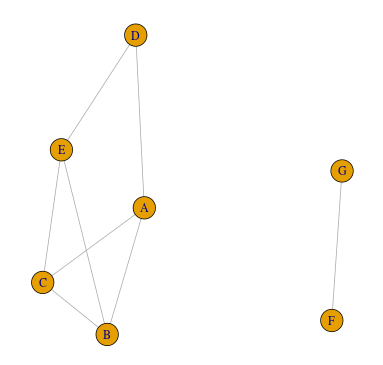True or false: the following matrix is a legit Leslie matrix for demographic population ecology.
2 / 2 pts
True or false: the following matrix is a legit Leslie matrix for demographic population ecology.

Correct!
True
False
2.5 / 2.5 pts
Suppose a certain species is modeled with the following Leslie matrix:
If, in the first year, the population consists of 10 newborns (i.e., one-year-olds), 10 two-year-olds, and 10 three-year-olds, how many two-year-olds will there be next year?
Correct!
Correct Answers
10.0 (with margin: 0.0)
2.5 / 2.5 pts
Suppose a certain species is modeled with the following Leslie matrix:
If, in the first year, the population consists of 10 newborns (i.e., one-year-olds), 10 two-year-olds, and 10 three-year-olds, how many three-year-olds will there be in two years?
Correct!
Correct Answers
5.0 (with margin: 0.0)
3 / 3 pts
A friend wants to send you a four-bit message using a Hamming encoding scheme. When you receive his transmission, the bits you receive are as follows:
1100110
What is his four-bit message?
Correct!
Correct Answers
0110
0,1,1,0
0, 1, 1, 0
[ 0, 1, 1, 0 ]
[0, 1, 1, 0]
[0,1,1,0]
(0,1,1,0)
(0, 1, 1, 0)
( 0, 1, 1, 0 )
3 / 3 pts
Now he sends another 4-bit message. When you receive his transmission, the bits you receive are:
0001000
What is his four-bit message this time?
Correct!
Correct Answers
0000
0 0 0 0
0,0,0,0
0, 0, 0, 0
[0000]
[0,0,0,0]
[0, 0, 0, 0]
[ 0,0,0,0 ]
[ 0, 0, 0, 0 ]
(0,0,0,0)
(0 0 0 0)
( 0, 0, 0, 0 )
1 / 1 pts
If you give me the adjacency matrix A for a graph, then to find the number of distinct paths from node i to node j of length 5 or less, I compute A5 (i.e., A to the fifth power) and look at entry [i,j] of that matrix.
True
Correct!
False
1 / 1 pts
If you give me the adjacency matrix A for a graph, then to find the number of distinct paths from node i to node j of length 3 or less, I compute A3 + A2 + A, and look at entry [i,j] of that matrix.
Correct!
True
False
4 / 4 pts
Consider the following graph:

Which of the following are true about its adjacency matrix? Check all that apply.
Correct!
It is a square matrix.
It has 5 rows.
Correct!
It has 7 columns.
Correct!
Its entries are all 1’s and 0’s.
Correct!
It has 0’s all along the main diagonal.
It is upper-triangular (at least under some permutation of the rows/columns).
Correct!
It is block diagonal (at least under some permutation of the rows/columns).
Correct!
It is symmetric, no matter how the rows and columns are ordered.
Correct!
The largest row sum (i.e., the largest total of the entries in any given row) is 3.
The smallest row sum (i.e., the smallest total of the entries in any given row) is 2.
1 / 1 pts
What did you think of the “dab” Stephen did at the very beginning of allthemath.org Volume Two Episode VI? (You will receive full credit for this question just by answering it, even if your answer doesn’t match mine.)
zomg soooooo cool wow
Correct!
not bad, but you could use more practice
tbh, you’re kind of old to be doing that sort of thing
Umm….





